Fiction
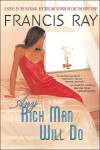 Any Rich Man Will Do, Francis Ray, St. Martin’s Griffin, ISBN # 0-312-32431-6, $13.95. Any Rich Man Will Do, Francis Ray, St. Martin’s Griffin, ISBN # 0-312-32431-6, $13.95.
Broke and living in a shabby motel, beautiful bad girl Jana Franklin has become an outcast in the elite society she once ruled. With her divorce from wealthy Gray Livingston, her dubious past, and no skills to claim, Jana is unable to support herself. Without friends and without hope, she has no one she can depend on but herself. Then one night she stumbles into Olivia Maxwell’s store, Midnight Dreams. There she meets Tyler Maxwell--the first man she can’t maneuver, toy with, or fool. After this chance meeting, tough girl Jana learns that it takes more than scheming to get her man.
 Crazy Love, Desiree Day, Pocket Books, ISBN # 1-4165-0350-7, $13. Crazy Love, Desiree Day, Pocket Books, ISBN # 1-4165-0350-7, $13.
Stacie Long thinks she’s God’s gift to men; well, at least to wealthy, fine looking, luxury car driving men. But behind all that confidence she has a secret, one that even her best friend doesn’t know about, and one that may just keep her forever searching for her perfect man. Tameeka Johnson is a success; she’s the owner of of one of Atlanta’s top wellness shops. But her success in the bedroom is at an all-time low--even though she’s met the man of her dreams, her insecurities may just keep her from living happily ever after. Stacie and Tameeka are super tight, but their friendship is tested by sexy NBA players, baby mama drama, and temptations like they’ve never known before. Because if there’s one thing these girls like better than each other, it’s men.
 Don’t Get It Twisted, Eric Pete, NAL Trade, ISBN # 0-451-21654-7, $13.95. Don’t Get It Twisted, Eric Pete, NAL Trade, ISBN # 0-451-21654-7, $13.95.
Don’t Get It Twisted explores the relationships between African American men and women in a sexy yet heartfelt story of friendship, secrets, and love on the streers of Los Angeles. Isrie Walker has just ended a disappointing relationship with a man she met on a TV dating show; her struggling photographer friend Deja Douglas hides her shame about being overweight behind her bubbly personality. When dramatic and violent revelations about Isrie and Deja’s relationships come to light, both women learn the hard lesson that things are not always what they seem.
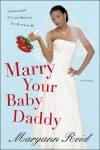 Marry Your Baby Daddy, Maryann Reid, St. Martins’s Griffin, ISBN # 0-312-34197-0, $12.95. Marry Your Baby Daddy, Maryann Reid, St. Martins’s Griffin, ISBN # 0-312-34197-0, $12.95.
When their unassuming Grandma June dies, Giovanna, Keyah, and Fatima are shocked to learn that she had saved a small fortune and has left three million dollars to each of her granddaughters. But there’s a catch: each sister must marry the father of her child no later than six months after reading the will. Piece of cake, right? Wrong. Each sister has a complicated relationship with her "baby daddy." So why would Grandma June want her granddaughters to marry these men? Because sometimes Grandma really knows best. The clock is ticking. Will it be a countdown to wedding bells or disaster?
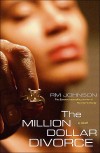 The Million Dollar Divorce, RM Johnson, Simon & Schuster, 0-7432-5817-7, $13. The Million Dollar Divorce, RM Johnson, Simon & Schuster, 0-7432-5817-7, $13.
Successful business entrepreneur Nate Kenny is thrilled to marry the beautiful and intelligent Monica, chiefly because it means he can at last fulfill his lifelong dream of having a family. When they find Monica is unable to bear children, Nate wants out of the marriage, any love he once felt for her is gone. But he’s worried about losing half of his $60 million fortune in a divorce settlement. To exploit the infidelity clause in their prenuptual agreement, Nate finds Lewis Waters and sets him up with all the accessories he believes will make Monica fall for him, at least in lust. But when Monica falls hard for Lewis, Nate panics--was protecting his fortune more important than saving his marriage? Overwhelmed with second thoughts, Nate is willing to do anything to get Monica back.
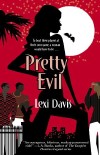 Pretty Evil, Lexi Davis, Pocket Books, ISBN # 1-4165-0525-3, $14. Pretty Evil, Lexi Davis, Pocket Books, ISBN # 1-4165-0525-3, $14.
Longtime friends Rice, Coach, and Geffen can’t believe it when they see an abandoned property just a stone’s throw away from Rodeo Drive--the dilapidated wreck is more haunted house than Hollywood high life. But when they enter the massive estate with their best friend and realtor Sunny, they see a great financial investment--a place to live large and dream big. But Sunny senses all is not right with the house. Turns out it is already occupied by a supernatural vixen who resents the intruders and vows to use her shape-shifting powers to dispatch them--not with violence but with an equally lethal weapon: sex. Morphing into each man’s fantasy lover, she takes them one by one to heights of ecstacy designed to torment their souls. Only Sunny, armed with an extrasensory gift and some very powerful prayers, can take on this devilishly gorgeous demon--even if she has to pay the ultimate price.
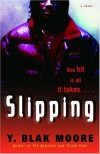 Slipping, Y. Blak Moore, One World / Ballantine, ISBN # 0-345-47594-1, $12.95. Slipping, Y. Blak Moore, One World / Ballantine, ISBN # 0-345-47594-1, $12.95.
Growing up in a Chicago ghetto, seventeen-year-old Donald "Don-Don" Haskill has nothing but time on his hands--time he rarely spends in school, choosing instead to smoke weed and hang out with friends. As a child he witnessed his father’s suicide, and today Don-Don’s relationship with his mother, a worn-down cop trying to keep the family together, is tenuous at best. Then Don-Don meets a girl with a taste for crack, and his delinquent life turns violently criminal. But when a huge drug transaction goes terribly awry, a bloody chain of events is set off, as Don-Don becomes a moving target, not just for the Chicago police force but for the ghetto’s most hardened thugs.
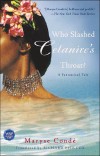 Who Slashed Celanire’s Throat?, Maryse Condé, Washington Square, ISBN # 0-7434-8261-1, $13. Who Slashed Celanire’s Throat?, Maryse Condé, Washington Square, ISBN # 0-7434-8261-1, $13.
On the one hand, beautiful Celanire--a woman mutilated at birth and left for dead--appears today to be a saint; she is a tireless worker who had turned numerous neglected institutes into vibrant schools for motherless children. But she is also a woman apprehended by demons, as death and misfortune seem to follow in her wake. Traveling from Guadalupe to West Africa to Peru, the mysterious, seductive, and disarming Celanire is driven to uncover the truth of her past at any cost and avenge the crimes commited against her.
Mystery
 Dying In The Dark, Valerie Wilson Wesly, Ballantine, ISBN # 0-345-46807-4, $12.95. Dying In The Dark, Valerie Wilson Wesly, Ballantine, ISBN # 0-345-46807-4, $12.95.
Private investigator Tamara Hayle is used to dealing with other people’s problems. But now her own past has come back to haunt her--literally. She’s been plagued by terrifying dreams about Celia Jones, an old friend whose walk on the wild side led to her horrible death. Celia’s teenage son, Cecil, begs Tamara to find his mother’s killer--only to end up dead himself. The search for the killer pulls Tamara deep into her friend’s troubled life: a bullying thug of an ex-husband; a handsome former lover who woos Tamara with charm and lies; and an angry, jealous woman who claims that Celia broke her heart. And those are just the obvious subjects. As she investigates, all clues lead to the past Tamara and Celia shared, and Tamara fears that that past will threaten her own son. But soon she uncovers more than she bargained for--revealing secrets someone would kill to keep in the shadows.
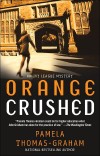 Orange Crushed, Pamela Thomas-Graham, Pocket Books, ISBN # 0-671-01672-5, $14. Orange Crushed, Pamela Thomas-Graham, Pocket Books, ISBN # 0-671-01672-5, $14.
A working weekend at a Princeton conference is just what Mikki needs to deflect the pre-holiday pressures--both professional and personal--that are closing in on her back in Cambridge. And there will be down time, too, at a party honoring Professor Earl Stokes, her old friend and mentor. Rumors abound that Stokes, a Princeton superstar, may depart for Harvard, a change that would stir up as much controversy as his new bestselling book on race issues. When Stoke’s body is discovered among the smoldering ruins of the not-yet-completed Black Studies building, a shattered Mikki refuses to accept the police findings that the death was accidental. And among the ashes she will uncover a murderous agenda with ominous implications for not only the Princeton campus but Harvard as well.
Non – Fiction
Autobiography / Biography
 Always Running: La Vida Loca, Gang Days in L.A., Luis J. Rodríguez, Touchstone, ISBN # 0-7432-7691-4, $14. Always Running: La Vida Loca, Gang Days in L.A., Luis J. Rodríguez, Touchstone, ISBN # 0-7432-7691-4, $14.
By age twelve, Luis Rodríguez was a veteran of East L.A. gang warfare. Lured by a seemingly invincible gang culture, he witnessed countless shootings, beatings, and arrests, then watched with increasing fear as drugs, murder, suicide, and senseless acts of street crime claimed friends and family members. Before long, Rodríguez saw a way out of the barrio through education and the power of words, and successfully broke free from years of violence and desparation. Always Running is a vivid memoir that explores the motivations of gang life and cautions against the death and destruction that inevitably claim its participants. It is ultimately an uplifting true story, filled with hope, insight, and a hard-earned lesson for the next generation.
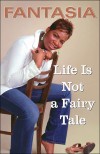 Life Is Not A Fairy Tale, Fantasia, Fireside, ISBN # 0-7432-8156-X, $21.95. Life Is Not A Fairy Tale, Fantasia, Fireside, ISBN # 0-7432-8156-X, $21.95.
Life Is Not A Fairy Tale is Fantasia’s down-to-earth and moving account of her journey to the top of the popular music scene. This is a candid portrait of her hardscrabble life in the South, her fascinating behind-the-scenes descriptions of what it means to be an American Idol, and her affirmation of the power of music to strengthen the spirit. Fantasia’s story shows that although life is not a fairy tale, with faith, love, hard work, and a little bit of sass, dreams can come true.
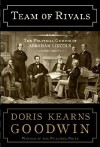 Team Of Rivals: The Political Genius of Abraham Lincoln, Doris Kearns Goodwin, Simon & Schuster, ISBN # 0-684-82490-6, $35. Team Of Rivals: The Political Genius of Abraham Lincoln, Doris Kearns Goodwin, Simon & Schuster, ISBN # 0-684-82490-6, $35.
Accalimed historian Doris Kearns Goodwin illuminates Lincoln’s political genius in this highly original work, as the one-term congressman and prarie lawyer rises from obscurity to prevail over three gifted rivals of national reputation--William H. Seward, Salmon P. Chase, and Edward Bates--to become president. We view the long, horrifying struggle from the vantage of the White House as Lincoln copes with incompetent generals, hostile congressmen, and his raucous cabinet. He overcomes these obstacles by winning the respect of his former competitors, and in the case of Seward, finds a loyal and crucial friend to see him through. This brilliant multiple biography is centered on Lincol’s mastery of men and how it shaped the most significant presidency in the nation’s history.
Children’s
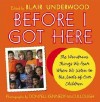 Before I Got Here: The Wonderous Things We Hear When We Listen to the Souls of Our Children, Blair Underwood, Atria Books, ISBN # 0-7432-7149-1, $18.95. Before I Got Here: The Wonderous Things We Hear When We Listen to the Souls of Our Children, Blair Underwood, Atria Books, ISBN # 0-7432-7149-1, $18.95.
Before I Got Here is a compilation of conversations, quotes, and stories showcasing the prolific experiences of children all over the country and includes 50 color photographs contributed by renowned photographer Donyell Kennedy-McCullough. The book also includes black pages at the back of the book for parents to record their own child’s unique insightful thoughts. It will inspire and amuse the multitude of parents who have undoubtedly shared moments such as those in the book with their own children, but perhaps have never dared to speak about them. What’s more, Before I Got Here gives a variety of verbatim accounts of the way this generation is so profoundly different than those that have come before.
History
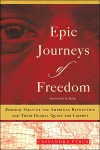 Epic Journeys Of Freedom: Runaway Slaves of the American Revolution and their Global Quest for Liberty, Cassandra Pybus, Beacon, ISBN # 0-8070-5514-X, $26.95. Epic Journeys Of Freedom: Runaway Slaves of the American Revolution and their Global Quest for Liberty, Cassandra Pybus, Beacon, ISBN # 0-8070-5514-X, $26.95.
During the American Revolution, thousands of slaves fled their masters to find freedom with the British. Having emancipated themselves--and with the rhetoric about the inalienable rights of free men ringing in their ears--these men and women struggled tenaciously to make liberty a reality in their own lives. This alternative narrative of freedom fought for and won traces the stories of dozens of individuals--including Harry, one of George Washington’s slaves--who left America and forged difficult new lives in far-flung corners of the British Empire.
Reference
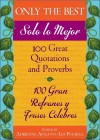 Only The Best: 101 Great Quotations and Proverbs, bilingual, Adrienne Avila with Lesie Pockell, Warner, ISBN # 0-446-69513-0, $9.95. Only The Best: 101 Great Quotations and Proverbs, bilingual, Adrienne Avila with Lesie Pockell, Warner, ISBN # 0-446-69513-0, $9.95.
From Miguel de Cervantes y Saavedra to Pablo Neruda to César Chávez, this unique bilingual book features quotations from some of the most eminent literary figures, politicians, social activists, and artists of all time. Capturing the Latino passion for life, it will inspire you--no matter what your heritage is --to seek your own best.
Religious
 The HCSB Light Speed Bible, William Proctor, Broadman & Holman, ISBN# 1-58640-066-5, $19.95. The HCSB Light Speed Bible, William Proctor, Broadman & Holman, ISBN# 1-58640-066-5, $19.95.
The Bible can be found almost anywhere, from a church pew to the middle drawer of a hotel nightstand. But did you know that the Bible is the most owned, yet least read, book in the world? Bestselling author and religious scholar William Proctor changes all of that with an easy-to-use, comprehensive Bible reading plan in his latest book, The HCSB Light Speed Bible. The HCSB Light Speed Bible is a study program that can empower anyone with at least a seventh-grade reading ability to read every word of the entire Bible in 24 hours or less--with good comprehension. Readers can even measure their growing understanding and comprehension of the text by using the book’s self-quizzes to track personal progress.
 Unchosen: The Hidden Lives of Hasidic Rebels, Hella Winston, Beacon, ISBN # 0-8070-3626-9, $23.95. Unchosen: The Hidden Lives of Hasidic Rebels, Hella Winston, Beacon, ISBN # 0-8070-3626-9, $23.95.
In Unchosen, socioligist Hella Winston exposes the difficult choices people questioning Hasidim face as they struggle with the ultra-Orthodox Judaism. Eventually gaining unprecedented access to the world of "Hasidic rebels," Winston first began talking with Hasidic Jews in Brooklyn for her doctoral dissertation, approaching the insular Satmar and Bobov sects, and then slowly learning of the anguish that has led many to silently question their community or completely break away. Unchosen brings to light the complexity of living in modern America while being bound by a community’s distinctly pre-modern worldview. | |
Books Reviews By Kam Williams
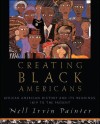 Creating Black Americans: African-American History and Its Meanings, 1619 to the Present, history, Nell Irvin Painter, Oxford University, ISBN# 0-19-513755-8, $35. Creating Black Americans: African-American History and Its Meanings, 1619 to the Present, history, Nell Irvin Painter, Oxford University, ISBN# 0-19-513755-8, $35.
"Over the course of more than two centuries, black American artists have represented their history- scrupulously, meaningfully, and brilliantly. Their efforts represent a beautiful example of African- American historical agency, which makes black people historical actors, not passive victims of history…
"The work of black artists contradicts demeaning conventional images of black people and puts black people’s conception of themselves at the core of African-American history. Whereas U.S. culture has depicted black people as ugly and worthless, black artists dwell on the beauty and value of black people…
"Virtually all the images in Creating Black Americans are by African-Americans. By conscious design, negative stereotypes do not appear. Although negative images still appear in American culture, I do not reinforce humiliating, insulting depictions of African-Americans; better that my readers discover a rich new body of images produced by black people themselves.
--Excerpted from the Preface
While I have studied straight history books and perused plenty of art books, I don’t remember ever coming across a comprehensive text which attempted to illustrate history exclusively with fine art. And I’ve certainly never seen such a tome devoted exclusively to African Americana. Fortunately, this novel idea did come to Nell Irvin Painter, and that vision inspired her to execute the elegant Creating Black Americans: African-American History and Its Meanings, 1619 to the Present.
Painter, Professor of American History at Princeton University, and former director of the School’s Black Studies program, has successfully come up with a unique way of matching meaningful, magnificent paintings, sculptures, and photographs with her stirring yet scholarly account chronicling all the traumas, tragedies and triumphs of Black people here over the generations, from the inception of slavery through The Declaration of Independence, The Civil War, Emancipation, Reconstruction, Jim Crow, The Harlem Renaissance, The Depression, World War II, the Civil Rights and Black Power Movements, and right up to today’s Hip-Hop Generation.
The book incorporates works from around 100 noted African American artists, ranging from the readily recognizable Romare Bearden and Jacob Lawrence to the relatively obscure though no less deserving, such as Joshua Johnston, a freedman who painted over 80 portraits in Baltimore between 1795 and 1825. Though Creating Black Americans may be worthwhile for the art history lesson alone, as it includes brief bios of each contributor, what makes it most valuable is its refreshing restatement of the Black centuries-long struggle to survive from the perspective of the exploited.
In much the same way that gospel music stirs one’s soul, the passion of these endlessly inventive artists helps set the record straight about the Black experience in a profound way which mere words could never do. The pictures then combine with enlightening entries which repeatedly turn the conventional wisdom on its head, such as the often unchallenged notion that slaves were docile. We learn that at least 25 revolts occurred in America even before the patriots embarked on their own American Revolution.
In 1712, Africans and Native Americans joined forces for a bloody revolt in New York City, while another major rebellion transpired in South Carolina in 1739. After observing whites gaining their independence from England, Denmark Vesey led an 1800 rebellion of over a 1000 slaves in Virginia.
Enriching on several levels, Creating Black Americans is a masterpiece because it offers a deeper understanding of all the painful suffering and adversity endured by a proud and determined people while simultaneously bearing witness to a cultural legacy equally rich with strength, hope, and faith.
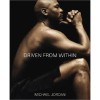 Driven From Within, auto-biography, Michael Jordan, Atria, ISBN# 0-7432-8400-3, $35. Driven From Within, auto-biography, Michael Jordan, Atria, ISBN# 0-7432-8400-3, $35.
That day I met Phil Knight for the first time. Neither of us could imagine what the next 20 years together would produce… Nike was the perfect place for two people as competitive as Phil and me because we could plug into one another in an atmosphere that reflected our aspirations… We could have come from different places, but we have always shared a commitment to creating products that reflect the same fundamental values.
Brand Jordan exists because of what Phil night created before I ever came along.
--Excerpted from Introduction
As great a basketball player as Michael Jordan was, maybe even better than my all-time favorite Dr. J, he might be even more of a success as the ultimate corporate man. For proof, one need look no further than his new book, Driven From Within.
First of all, ask yourself, how many athletes manage to remain in the public eye three years after the end of their playing careers? Michael has, and his partnership with Nike is as mutually profitable as ever. His Air Jordans, now celebrating their 20th anniversary, have flourished not only due to his extraordinary, gravity-defying basketball talents, but also due to a combination of his charisma and business acumen.
This help explains why he launched his new book ever so strategically with an appearance on 60 Minutes, immediately after a nationally-televised football game, and a week before the beginning of a new NBA season. He was able to do so because he published it with Atria Books, which is a division of Simon and Schuster, which, in turn, is owned by Viacom. 60 Minutes airs on CBS, which is also a sub-division of that same parent company, so all the cross-promotion only helps everybody’s bottom line.
Though Driven From Within masquerades as an inspirational autobiography, it’s essentially the literary equivalent of an infomercial, in this case designed to help launch Jordan XX, the latest sneaker created in conjunction with Nike. The generously illustrated opus features as many photos of Nike footwear and Nike logos as it does of Michael. The text, no doubt Nike-approved, was edited by Mark Vancil, a veteran sports ghostwriter who has previously collaborated with Michael on three other bios and with other sports greats like Cal Ripken, Dan Marino and Ken Griffey, Jr.
Besides Michael’s own pearls of wisdom, we hear from nine of the people closest to him, including his mother, Delores, his agent, David Falk, the designer of 14 of his 20 sneakers, Tinker Hatfield, his college coach, Dean Smith, and Howard White, his first friend at Nike.
As if those $200 sneakers aren’t expensive enough, now they expect you to pay another $35 for a shameless, coffee table book full of colorful advertisements for the Air Jordan product line. I like Mike, but I still prefer Dr. J.
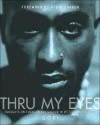 Thru My Eyes: Thoughts on Tupac Amaru Shakur in Pictures and Words, Gobi, Atria, ISBN# 0-7434-5700-5, $19.95. Thru My Eyes: Thoughts on Tupac Amaru Shakur in Pictures and Words, Gobi, Atria, ISBN# 0-7434-5700-5, $19.95.
Growing up in Iran, I had often heard of dervishes, people who posess a dynamic, heightened sense of awareness. Much like the shaman or the prophet, these beings are not always accepted by their society or tribe yet often act as powerful forces in shaping it. Tupac possessed such qualities. His artistic contributions to music, film, and poetry are unparalleled.
During his short life and time since his death, the media has focused solely on aspects of his character that feed into black stereotypes. What has been neglected, however, is that Tupac was a very sensitive young man deeply affected by the suffering of oppressed people. Tupac was an important person not only to African American culture but also to world culture.
--Excerpted from Preface
When a pop star passes away prematurely, he or she is often elevated to an iconic status bordering on sainthood. This is the case with the late gangsta rapper Tupac Shakur, who has earned such adoration since becoming a victim of the East Coast-West Coast turf war at the tender age of 25. Despite, or perhaps because of a long rap sheet which included felony convictions for sexual assault and gun possession, he has been the beneficiary of an enduring street credibility which continues to resonate with members of the Hip-Hop Generation.
Considered by many some to be the African American equivalent of Elvis Presley because so many truly believe that he is still alive, Tupac serves as an inspiration to the faithful following he frequently referred to as "Thugs." This is the demographic most likely to appreciate Thru My Eyes: Thoughts on Tupac Amaru Shakur in Pictures and Words.
The book is essentially a hardcover fanzine featuring over 100 never before published pictures interspersed with sparse reflections, plus a one-page note from his mom, Afeni Shakur. The rest of the text and all the photographs come courtesy of Gobi, a director of music videos best known for his work with Tupac, Snoop Dogg, Ice Cube, and Mack-10, and for his Fortune 500 commercials for companies like Gateway.
Heavy on candid snapshots and superficial in terms of its reflections, Thru My Eyes offers an opportunity for those so-inclined to see their idol during downtime in the days shortly before his demise. Whether mugging shirtless for the camera or posing with scantily-clad video hos, Tupac always seems to have a death grip on a ubiquitous cigarette. Who knows whether Philip Morris underwrote this project, but it certainly looks like an extended ad for lethal lung rockets.
The vapid verbiage accompanying the photos is, unfortunately, utterly without substance. A few "TRUE" samples ought to convince the curious. "Tupac was a TRUE perfectionist. He enjoyed things of superior quality." And, "Tupac was a TRUE Gemini." How about, "Tupac was a TRUE professional and would deliver 100 percent of the time." I guess the author and his editor really like the word TRUE.
Obviously, then, Thru My Eyes is not recommended for anyone expecting to find profound insights about its subject. Think professionally-bound photo album.
 Unlikely Angel: The Untold Story of the Atlanta Hostage Hero, non-fiction, Ashley Smith with Stacy Mattingly, William Morrow, ISBN # 0-310-27067-7, $24.95. Unlikely Angel: The Untold Story of the Atlanta Hostage Hero, non-fiction, Ashley Smith with Stacy Mattingly, William Morrow, ISBN # 0-310-27067-7, $24.95.
He didn’t hurt me in that bedroom. I could just as easily die in this apartment as make it out of here alive. While I had a chance, I wanted to do whatever I could to shift the dynamic more in my favor. As the bathroom steamed up, I decided I would start asking Brian Nichols some personal questions in my effort to get as close to him as I could.
‘Do you have any kids?’ I asked, raising my voice a little so he could hear me over the water. There was a pause. Then he answered in a low, flat tone. ‘I just had a son born. I’m never going to be able to raise him. I’m going to prison for the rest of my life.
‘What? Just had a son? And then he goes on a killing spree? Unbelievable! I knew I needed to turn that negative response around. ‘Well, you never know what can happen,’ I said. ‘Do you believe in miracles?’ No response. Just the sound of water hitting the tub. Then: ‘Yeah, I believe in miracles.
‘Thank you, God. Help me here.
--Excerpted from Chapter 8, Do You Believe in Miracles?
On March 11, 2005, Ashley Smith, a 27 year-old widow and single-mom, moved into a new apartment on the outskirts of Atlanta. Downtown, on that same day, 33 year-old Brian Nichols, a buff and beefy defendant on trial for rape, overpowered and murdered the guard escorting him to the courtroom after wrestling away her handgun. Next, Nichols went on a rampage during which he also slaughtered his case’s judge, court stenographer, and a federal agent, and escaped.
While authorities fanned out across the state in the most intense manhunt in the history of Georgia, the fugitive eventually crossed paths with Ashley Smith in parking lot of her new apartment complex. Nichols took Smith hostage in her own flat, but never harmed her physically over the course of her harrowing, overnight ordeal. Somehow, she managed to touch the soul of a man who had temporarily snapped by sharing her own sorry life story while her captor bathed, ate and did drugs.
Apparently Nichols implored him to allow her to keep a promise to visit her daughter, Paige, the next morning, especially since the six year-old’s father had been murdered when the little girl was only two. Plus, Smith read to the spree killer from The Purpose-Driven Life, a Christian-oriented best-seller, with an uplifting message of hope and redemption.
Unlikely Angel: The Untold Story of the Atlanta Hostage Hero, written by Smith with the help of Stacy Mattingly, is a gripping, minute-by-minute account of exactly what transpired in those tense hours when Ashley was alone with Brian Nichols. She admits that she herself was a drug addict at the time, and that it was her ice, AKA crystal meth, which he had snorted up his nose.
Although you know at the outset how the book is going to end, it is nonetheless surprisingly touching, because not only did Ashley talk Nichols into surrendering with no further carnage, but she, too, was transformed by the entire experience. Turning her life around, she has kicked her narcotics habit cold turkey, gotten custody of her daughter who had been living with relatives, and collected $70,000 in reward money. Best of all, she seems to have taken to heart the same purpose-driven lessons which had moved a murderer to see an alternative to more senseless bloodletting.
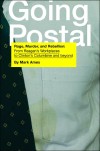 Going Postal: Rage, Murder and Rebellion, Mark Ames, Soft Skull Press, paperback, 284 pages, ISBN: 1-932360-82-4, $15.95. Going Postal: Rage, Murder and Rebellion, Mark Ames, Soft Skull Press, paperback, 284 pages, ISBN: 1-932360-82-4, $15.95.
Rage as we know it today did not exist when Ronald Reagan took power in 1981. The word stress had a far less lethal meaning then. The vise hadn’t yet been applied so intensely and so broadly, from the middle-class employee’s 80-hour work week, down to the three year-old’s preschool exam prep course. That is gone now.
We went from the Seventies malaise to today’s post-industrial slavery, where we have accepted, with a cheerful attitude, the notion that our master’s interests- the constant transfer of wealth upward into the plutocratic class’ pockets- are identical with our own interests.
Before Reagan, there was no such thing as "going postal" or schoolyard
rampage murders. It all started with his reign and his revolution. Thanks to Ronald Reagan, we are all miserable wage slaves, or schoolyard wretches being pressed and prepared for life in the office world.
Americans have become perfect slaves, fools and suckers, while a small elite is cackling all the way to the offshore bank. Why is it that in those rare, exceptional cases when Americans take up arms against the malice that Ronald Reagan bequeathed to us, we only turn on each other in our workplaces, our post offices, and schools?
--Excerpted from Postscript
Have you noticed how going postal has become such a commonly accepted aspect of modern life that spree killings rarely register much more than a momentary blip on the cultural Geiger counter? For instance, only last week, a freshman shot and killed his assistant principal and wounded two others at a high school in Tennessee. But the story was not very widely reported in the mass media.
How has the United States degenerated to the point where we are blasé when somebody goes off like this? Offering an arresting theory is Mark Ames, author of Going Postal: Rage, Murder and Rebellion from Reagan’s Workplaces to Clinton’s Columbine and Beyond. Ames, a Californian in exile who moved to Moscow 11 years ago, is a social satirist whose biting political essays have appeared in The Nation, Playboy, and the New York Press.
What makes this book fascinating is not only Ames’ gripping accounts of dozens of latter-day cases where once normal folks have snapped into assassins, but his attempt to put these events in historical perspective. For instance, he sees plenty of parallels in America’s explosion of slave revolts, like that of Nat Turner in 1831. Thus, he examines how those rational reactions to oppression were covered by the mainstream press.
The Richmond Inquirer, for instance, repeatedly referred to Africans who rebelled after enduring a lifetime of inhumane treatment as, "monsters" and "blood-thirsty wolves" condemning their behavior as "vindictive" and "without any cause or provocation." Ames compelling comparison suggests that just as the slaves weren’t really simply the embodiment of pure evil, there are probably equally plausible reasons for most of the impulsive assassinations which occur nowadays.
This leads to the books alarming conclusion that today’s massacres can no longer be conveniently dismissed as merely the work of wackos gone wild, and that the nation ought to pause to reassess the distribution of wealth, and the inordinate pressures ostensibly being exerted on fragile human psyches by our school and employment systems. A damning indictment which blames greed and the academic and corporate establishments for this gory plague which continues to baffle the social pundits. |